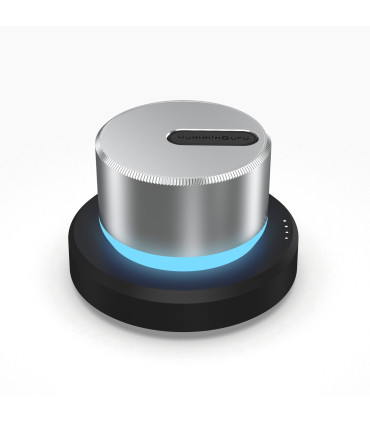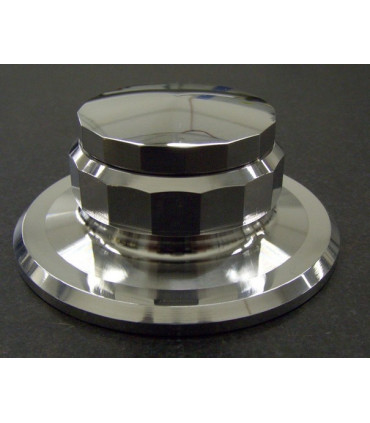Yamamoto RS-1 Turntable Record Stabilizer Clamp
Record Clamp RS-1. It is the amount class record stabilizer of inside with 84mm in diameter, 20mm [ in height ], and a weight of 380g. Since it is designed so that a record board may be touched only in a perimeter part on the back, a record board is not dumped too much, and the merit of sound is the feature. gun money began to delete, it came out, and the quality of the material has adopted nonmagnetic silver plating smoked finish. It is considered so that the magnetism of a cartridge or a turntable may not be affected.
Machined in solid Bronze, with a plating also known as "smoked silver".
A record has very low weight, laying loose on the platter, and most records are not even fully flat. The needle plays in the groove, at at this point, forces divide equally in two directions. The force which the groove puts on the needle is equal to the force the needle puts on the groove. This force is very large actually, and it makes the record produce a mechanical noise, equal to the music.
For this reason, a record player has a heavy platter, with a damping kind of coverage. However this doesn't bring much if the record lays loose on the platter. Suppose you listen to a tone, coming from a guitar string. It will be reproduced will by the cartridge of course. However the tone from the needle will also find it's way through the record vinyl itself, and after some reflections against the edges, reach the needle a second time, and more times, each with small time delay. Also, harmonics are generated that way. The effect is similar to unwanted room reflections. Since the effect is not so extreme, a person will not hear this directly as reflections. However the human ear will get tired from this sooner. If you ever heard the difference of a listening room with hard walls and a hard floor, and the same room with damping materials, you will know the effect. Sound doesn't change, but you can hear it longer, and not get tired.
So the record clamp is not so much a clamp, it is a necessary element to minimize acoustical resonances and reflections inside the record body, any by this greatly improve the sound. You are listening only to the sound that is produced by the groove, needle, and no longer to reflections and resonances is a loose laying record.























Leave a review